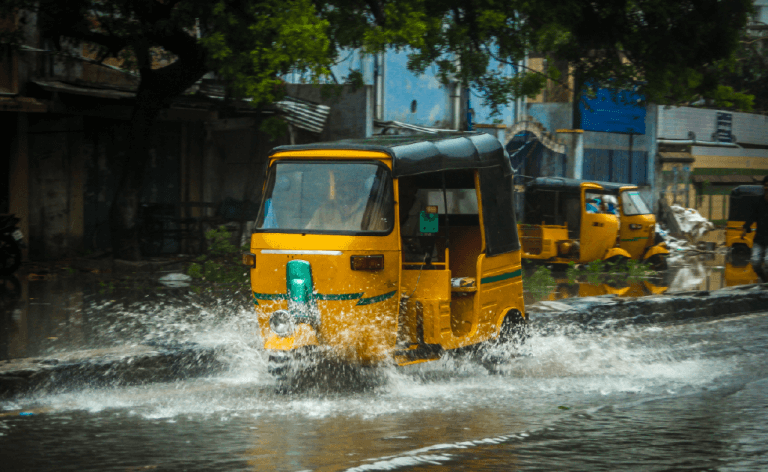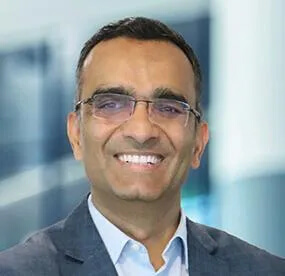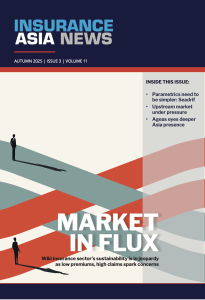SIRC: Booming and unconstrained property speculation fuelling India flood risk, Moody’s says
November 6 2025 by Marcus Alcock
The fast-paced and comparatively unconstrained nature of property construction in India is fuelling flood losses for (re)insurers, according to Alok Kumar, head of Global Analytical Services and managing director for India for Risk Management Solutions (RMS), a Moody’s Analytics company.
“For two decades, the market was mostly concerned about earthquake risk, driven by the fact that India had a massive earthquake in 2001 in Gujarat, which at that time was not as industrialised as it is today,” Kumar said.
“The whole insurance market and risk transfer market was very focused on that. Fast forward to today: given the rapid urbanisation of the country, and not necessarily controlled urbanisation of the country, has resulted in weather perils such as flood becoming extremely important.
“As a country we experience a number of floods every single year, and these floods for the insurance industry are becoming important, as these are what drive the losses that they see in the lower reinsurance layers that they buy.
“Big losses are largely transferred to reinsurers, but these mid-sized flood losses largely stay on insurance companies’ books, and that’s why insurers are getting concerned about the frequency of these losses, and the fact that they are staying on their own books. That is a significant shift.”

“With the pace of urbanisation, the challenge is that they could have built anyway they wanted. And the first priority has been ‘build! build! build!’ because real estate prices are going up.”
Alok Kumar, Moody’s
Kumar accepted that climate variability is clearly playing a part in the increasing frequency of flood losses, but stressed that this is not the whole picture.
“More and more I like to call urban flooding a man-made disaster rather than a natural disaster,” he said.
“The size of losses is increasing because the urbanisation is not very well planned. There are buildings being constructed on what used to be the floods zones, or what used to be the lake beds, getting refilled. There is massive construction happening, but when the rain happens, the water has to go somewhere, and it goes to the areas that are flood plains or low-lying areas and you see massive flood losses. That’s why I call it a manmade disaster; it’s not only the volume of rainfall that is causing this.”
Flood risk management
Kumar also accepted that India has “a long way to catch up” when it comes to replicating the well-developed flood risk management infrastructure and procedures of some other countries.
“With the pace of urbanisation, the challenge is that they could have built anyway they wanted. And the first priority has been ‘build! build! build!’ because real estate prices are going up. So they’ve built a lot and now water doesn’t have any outlet. Urban India has a lot of big apartment blocks, with two or three levels of basement, and during floods these basements get filled, causing massive damage to the cars there,” he said.
He said that Moody’s already had a detailed and comprehensive flood moss for India, and has recently added a tropical cyclone loss model.
“A of flooding is also triggered by the tropical cyclones which are coming on board,” he said, adding that Moody’s ambition was to provide “a comprehensive and complete range of modelling solutions to a growing market like India.
“Now in India we have a probabilistic flood model, we also have tropical cyclone.”
Kumar was also optimistic about the prospects for modelling services in India next year as the country continues to open up to international (re)insurers after decades of relative protectionism.
“Global players are used to a risk-adjusted view of the business,” he added.
“They want to make sure they are bringing the latest science and technology to help identify and quantify the risk. That’s the shift I expect to see as more foreign players come into the market: risk management will become more scientific and more technology-based.”
-
QBE | Elevating customer experience, humanising claims: QBE Asia’s ‘Solutions in a Box’
Vastly improving turnaround times and personalising service delivery, QBE Asia’s award-winning, end-to-end bundled claims solutions is a game-changer for the insurance industry.
-
Beazley | What does cyber protection look like from day 1 to day 600 and beyond?
Cybersecurity is no longer just an IT concern, but a governance issue that belongs on the boardroom agenda.
-
Sedgwick | Preparing for the next storm
Insurance industry needs to recalibrate, invest in innovation and strengthen systems, talent and data practices.
-
Peak Re | From climate modelling to market opportunity: Forging a new clarity on Southeast Asia’s climate risk
Southeast Asia's protection gap: a crisis of clarity, not just capital

